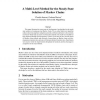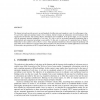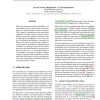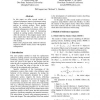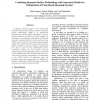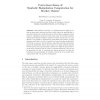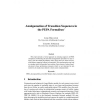SIMVIS
2004
14 years 3 months ago
2004
This paper illustrates the current state of development of an algorithm for the steady state solution of continuous-time Markov chains. The so-called multi-level algorithm utilize...
IADIS
2003
14 years 3 months ago
2003
The Internet network provides access to several hundreds of million sites and expands at a rate of a million pages a day. Yet, given the rapid and anarchical nature of its evoluti...
DAGSTUHL
2006
14 years 3 months ago
2006
One of the main difficulties faced when analyzing Markov chains modelling evolutionary algorithms is that their cardinality grows quite fast. A reasonable way to deal with this iss...
UAI
2008
14 years 3 months ago
2008
When the initial and transition probabilities of a finite Markov chain in discrete time are not well known, we should perform a sensitivity analysis. This is done by considering a...
SYRCODIS
2008
14 years 3 months ago
2008
In this paper we offer several models of reference sequences (traces of references) using Markov chains for testing of the replacement policies in caching systems. These models en...
DAGSTUHL
2007
14 years 3 months ago
2007
Iterative aggregation/disaggregation methods (IAD) belong to competitive tools for computation the characteristics of Markov chains as shown in some publications devoted to testing...
DSN
2005
IEEE
14 years 4 months ago
2005
IEEE
In general, decision support is one of the main purposes of model-based analysis of systems. Response surface methodology (RSM) is an optimization technique that has been applied ...
MMB
2010
Springer
14 years 4 months ago
2010
Springer
Abstract. Bisimulation reduction is a classical means to fight the infamous state space explosion problem, which limits the applicability of automated methods for verification li...
ICALP
2000
Springer
14 years 5 months ago
2000
Springer
Today many formalisms exist for specifying complex Markov chains. In contrast, formalism for specifying the quantitative properties to analyze have remained quite primitive. In th...
ICALP
2000
Springer
14 years 5 months ago
2000
Springer
This report presents a formal approach to reducing sequences in PEPA components. Performing the described amalgamation procedure we may remove, from the underlying Markov chain, t...
